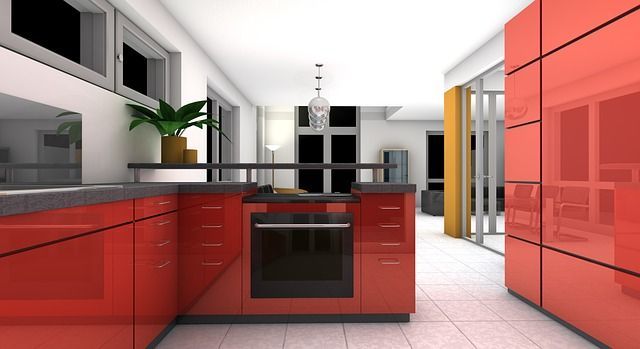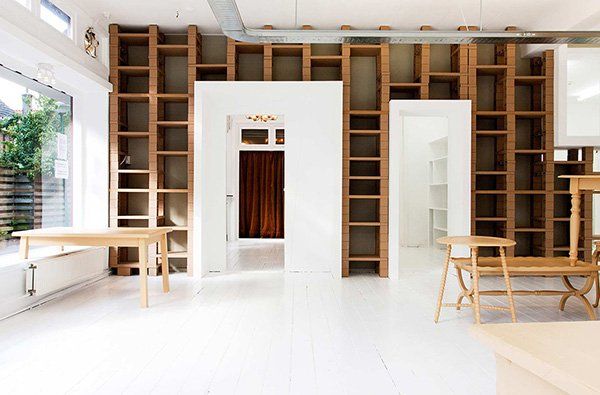BLOG
Discover More.
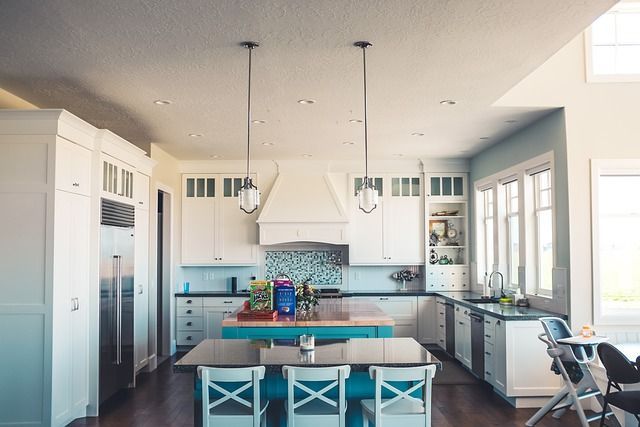
Renovating your home is more than just a cosmetic upgrade; it's an investment in your quality of life, comfort, and future. Whether you're looking to enhance functionality, increase resale value, or simply refresh your living space, home renovation projects offer a myriad of benefits. In this blog post, we'll explore seven compelling reasons why renovating your home can be one of the best decisions you'll ever make. Enhance Functionality: Over time, your needs and lifestyle may evolve, and your home should adapt accordingly. Renovating allows you to customize your space to better suit your lifestyle, whether it's expanding your kitchen for more cooking space, adding a home office for remote work, or creating a luxurious spa-like bathroom for relaxation. By enhancing functionality, you can improve the flow and efficiency of your home, making everyday tasks more enjoyable and convenient. 2. Increase Property Value: One of the most significant benefits of home renovation is the potential to increase your property's value. Strategic upgrades and improvements can significantly boost your home's resale value, making it more attractive to potential buyers in the future. Whether it's updating outdated fixtures, modernizing the kitchen, or adding energy-efficient features, renovations can yield a high return on investment and help you maximize the value of your property. 3. Improve Energy Efficiency: In today's eco-conscious world, energy efficiency is a top priority for many homeowners. Renovating your home allows you to incorporate energy-efficient features and technologies that can lower utility bills, reduce environmental impact, and enhance comfort. From upgrading to energy-efficient appliances and windows to adding insulation and installing a programmable thermostat, small changes can make a big difference in your home's energy performance and sustainability. 4. Enhance Comfort and Livability: Your home should be a sanctuary where you can relax, unwind, and recharge. Renovating allows you to create a more comfortable and livable environment that reflects your unique tastes and preferences. Whether it's adding cozy nooks, improving indoor air quality, or upgrading to smart home technology for added convenience, renovations can transform your home into a haven of comfort and tranquility for you and your family to enjoy. 5. Address Safety and Structural Issues: Safety should always be a top priority when it comes to your home. Renovating provides an opportunity to address any safety hazards or structural issues that may exist, ensuring the health and well-being of your family. Whether it's repairing a leaky roof, replacing worn-out electrical wiring, or reinforcing the foundation, investing in necessary repairs and upgrades can protect your home and provide peace of mind for years to come. 6. Create Aesthetic Appeal: Aesthetics play a significant role in the overall look and feel of your home. Renovating allows you to update outdated features, refresh tired décor, and create a cohesive design scheme that reflects your personal style. Whether you prefer modern minimalism, rustic charm, or timeless elegance, renovations give you the opportunity to transform your home into a beautiful and inviting space that you'll love coming home to. 7. Accommodate Changing Needs: As your family grows and changes, so too do your housing needs. Renovating allows you to adapt your home to accommodate changing lifestyles, whether it's adding a nursery for a new arrival, creating a multi-functional space for homeschooling, or building a granny flat for aging parents. By renovating, you can ensure that your home continues to meet your family's needs and evolve with you over time. From enhancing functionality and increasing property value to improving energy efficiency and creating aesthetic appeal, there are countless reasons to renovate your home. Whether you're planning a major overhaul or a minor refresh, renovations offer an opportunity to customize your space, enhance comfort, and create a home that truly reflects your lifestyle and personality. So why wait? Start planning your home renovation project today and unlock the full potential of your living space.

In the realm of kitchen design, efficiency is paramount. One of the fundamental principles guiding this efficiency is the concept of the kitchen work triangle. This concept, which revolves around the relationship between the three primary work zones in the kitchen - the sink, the stove, and the refrigerator - plays a crucial role in determining the functionality and flow of the space. In this blog post, we'll delve into the kitchen work triangle and explore how it aligns with different kitchen layouts to create efficient and harmonious spaces for cooking and meal preparation. Understanding the Kitchen Work Triangle: The kitchen work triangle is a concept that dates back to the 1940s and remains a cornerstone of kitchen design to this day. The idea is simple yet powerful: the three key elements of the kitchen - the sink, the stove, and the refrigerator - should form a triangular arrangement with optimal distances between them. This arrangement ensures that the cook can move seamlessly between the three work zones, minimizing wasted steps and maximizing efficiency. The Ideal Work Triangle: The Sink: The sink is the primary workstation for tasks such as washing, rinsing, and food preparation. It should ideally be positioned in close proximity to the dishwasher and garbage disposal, allowing for easy cleanup and disposal of waste. The Stove: The stove, or cooktop, is where the magic happens - where ingredients are transformed into delicious meals. It should be situated within easy reach of the sink and the refrigerator, facilitating efficient food preparation and cooking. The Refrigerator: The refrigerator is the storage hub for perishable ingredients and prepared foods. It should be located near the sink and the stove, allowing for quick access to ingredients while minimizing unnecessary movement. Aligning the Work Triangle with Kitchen Layouts: Different kitchen layouts offer unique opportunities for optimizing the kitchen work triangle to suit your needs and preferences. Let's explore how some popular kitchen layouts harmonize with the work triangle concept: U-Shaped Kitchen: In a U-shaped kitchen layout, the sink, stove, and refrigerator are typically arranged along three walls, forming a natural work triangle. This layout offers excellent efficiency for cooking and meal preparation, with everything within easy reach of the cook. L-Shaped Kitchen: In an L-shaped kitchen layout, the sink and the stove are often positioned along one wall, with the refrigerator located on an adjacent wall. This configuration allows for a streamlined work triangle, with the sink and stove forming one leg of the triangle and the refrigerator forming the other. Island Kitchen: In an island kitchen layout, the sink, stove, and refrigerator are typically positioned around the perimeter of the room, with the island serving as a central workstation. This layout offers flexibility in arranging the work triangle, with the island providing additional workspace and storage options. Galley Kitchen: In a galley kitchen layout, the sink and the stove are usually positioned along one wall, with the refrigerator located on the opposite wall. While the compact nature of the galley kitchen may limit the size of the work triangle, careful planning can still ensure efficient workflow and functionality. The kitchen work triangle is a guiding principle that informs the layout and design of every efficient kitchen. By understanding the relationship between the sink, the stove, and the refrigerator, and how it aligns with different kitchen layouts, you can create a space that maximizes efficiency, functionality, and comfort. Whether you prefer the spaciousness of a U-shaped kitchen, the openness of an island kitchen, or the efficiency of a galley kitchen, the work triangle concept remains a timeless and indispensable tool for achieving a well-designed and harmonious culinary space.
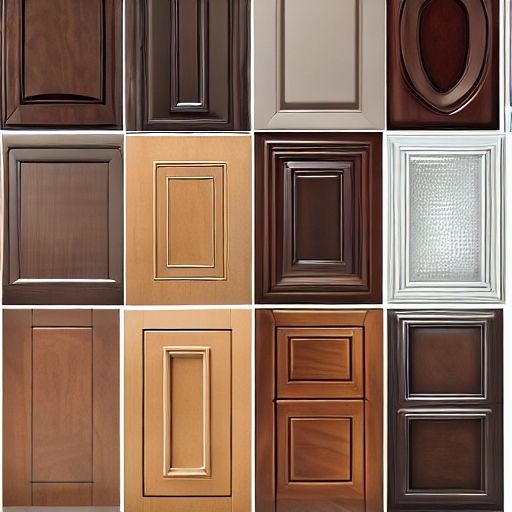
Cabinet doors are not only functional elements of your kitchen or bathroom; they also play a significant role in defining the style and personality of your space. With a plethora of options available, choosing the right cabinet door style can be a daunting task. In this blog post, we'll explore some popular cabinet door styles and considerations to help you select the perfect option for your home. Classic Raised Panel Doors: Timeless Elegance Raised panel cabinet doors are a classic choice that exudes timeless elegance and sophistication. Featuring a raised center panel surrounded by a decorative frame, these doors add depth and dimension to your cabinetry, creating a sense of traditional charm. Raised panel doors are versatile and can be paired with various finishes and hardware styles to achieve the desired look, whether it's a cozy farmhouse kitchen or a formal dining room setting. Sleek Flat Panel Doors: Modern Simplicity Flat panel cabinet doors, also known as slab doors, offer a sleek and contemporary aesthetic that is perfect for modern and minimalist spaces. With their clean lines and smooth surfaces, flat panel doors create a seamless and streamlined look that complements a wide range of design styles. Whether you prefer a high-gloss finish for a luxe feel or a matte finish for a more understated look, flat panel doors provide endless possibilities for customization and versatility. Shaker Style Doors: Timeless Simplicity Shaker style cabinet doors are characterized by their clean lines, square edges, and recessed center panels. Inspired by the craftsmanship of the Shaker furniture tradition, these doors offer a timeless simplicity that is both elegant and understated. Shaker doors are highly versatile and can adapt to a variety of design aesthetics, from traditional to transitional to contemporary. Whether you opt for a natural wood finish for a rustic feel or a painted finish for a fresh, modern look, Shaker doors add timeless appeal to any space. Glass Front Doors: Elegant Transparency For homeowners looking to add a touch of elegance and sophistication to their cabinetry, glass front doors are an excellent choice. Whether it's clear, frosted, or textured glass, these doors allow you to showcase your favorite dishes, glassware, or collectibles while adding visual interest and depth to your space. Glass front doors are perfect for creating a light and airy atmosphere in kitchens, bathrooms, or dining rooms, and they can be paired with various frame styles to complement your overall design scheme. Customized Details: Personalized Touches When choosing a cabinet door style, don't forget to consider customized details that can add a personalized touch to your space. From decorative moldings and embellishments to unique hardware and finishes, these subtle details can make a big impact on the overall look and feel of your cabinetry. Whether you opt for intricate carving for a traditional feel or sleek metal accents for a contemporary edge, customized details allow you to express your individual style and elevate the beauty of your home. Choosing the perfect cabinet door style is an essential step in creating a cohesive and harmonious design scheme for your home. Whether you prefer the timeless elegance of raised panel doors, the modern simplicity of flat panel doors, or the understated charm of Shaker style doors, there's a cabinet door style to suit every taste and preference. By considering factors such as design aesthetics, functionality, and customization options, you can select the perfect cabinet door style that enhances the beauty and functionality of your space.
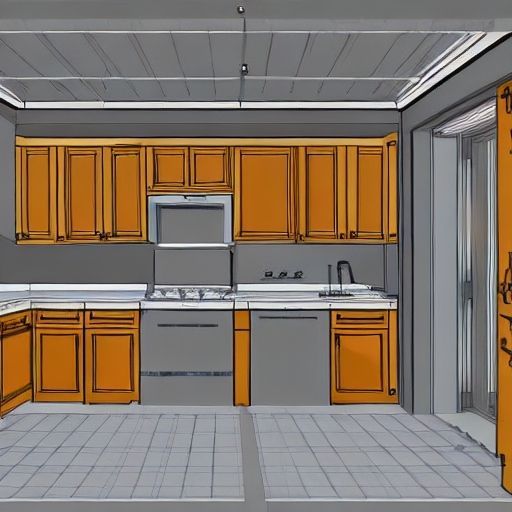
The kitchen is the heart of the home, a place where meals are prepared, memories are made, and families gather. When designing or renovating your kitchen, one of the most crucial decisions you'll make is selecting the layout. From maximizing space efficiency to enhancing functionality and flow, the layout of your kitchen plays a pivotal role in creating a space that meets your needs and reflects your lifestyle. In this blog post, we'll explore some popular kitchen layouts and the unique advantages of each, helping you find the perfect design for your home. a. The Timeless Classic: The U-Shaped Kitchen The U-shaped kitchen layout is a classic choice that offers ample storage, countertop space, and versatility. Characterized by cabinets and appliances arranged along three walls in a U-shape, this layout provides excellent efficiency for cooking, cleaning, and meal preparation. With everything within easy reach, the U-shaped kitchen is ideal for busy cooks who value functionality and convenience. Additionally, the enclosed design of this layout creates a cozy and intimate atmosphere, perfect for entertaining guests while cooking. b. Open and Airy: The L-Shaped Kitchen The L-shaped kitchen layout is a popular choice for modern homes, offering an open and airy feel that maximizes space and encourages social interaction. This layout features cabinets and appliances arranged along two adjacent walls in an L-shape, with an open countertop area for meal preparation and dining. The L-shaped kitchen provides excellent flow and flexibility, allowing for seamless transitions between cooking, dining, and entertaining areas. With its efficient use of space and open design, this layout is perfect for small to medium-sized kitchens, creating a sense of spaciousness and connectivity. c. The Entertainer's Dream: The Island Kitchen The island kitchen layout is a luxurious option that combines style, functionality, and versatility. Centered around a freestanding island or peninsula, this layout offers additional countertop space, storage, and seating options, making it perfect for entertaining guests or gathering with family. The island kitchen provides a focal point for the room, creating a natural hub for cooking, dining, and socializing. Whether used for meal preparation, casual dining, or as a buffet station during parties, the island adds both practicality and elegance to any kitchen design. d. Compact and Efficient: The Galley Kitchen The galley kitchen layout is a practical choice for small or narrow spaces, offering maximum efficiency in a compact footprint. Characterized by cabinets and appliances arranged along two parallel walls, this layout optimizes space by minimizing wasted movement and maximizing storage and workspace. The galley kitchen is ideal for single cooks or couples who prioritize functionality and efficiency without sacrificing style. With smart storage solutions and thoughtful design choices, the galley kitchen can be both practical and visually appealing, making it a popular choice for urban apartments and cozy cottages alike. e. The Chef's Sanctuary: The L-Shaped Kitchen with Island Combining the best of both worlds, the L-shaped kitchen with island layout offers the perfect balance of functionality, style, and flexibility. This layout features cabinets and appliances arranged along two adjacent walls in an L-shape, with a central island or peninsula adding additional countertop space, storage, and seating options. The L-shaped kitchen with island provides ample room for cooking, meal preparation, and casual dining, making it ideal for avid home chefs and busy families alike. With its seamless flow, abundant storage, and inviting atmosphere, this layout transforms the kitchen into a chef's sanctuary and a gathering place for family and friends. Choosing the right kitchen layout is a crucial step in creating a space that is both functional and beautiful. Whether you prefer the timeless elegance of the U-shaped kitchen, the open and airy feel of the L-shaped kitchen, or the luxurious versatility of the island kitchen, there's a layout to suit every taste and lifestyle. By considering factors such as space constraints, workflow, and entertaining needs, you can select the perfect kitchen layout that enhances the beauty and functionality of your home for years to come.

As we step into a new year, it's the perfect time to explore the latest trends shaping kitchen remodeling projects. From innovative technologies to timeless design elements, 2024 promises to be an exciting year for kitchen renovations. In this blog post, we'll take a closer look at ten kitchen remodeling trends that are set to dominate in 2024, inspiring homeowners to create stylish, functional, and inviting culinary spaces. Sustainable Materials: With a growing focus on sustainability and eco-conscious living, expect to see an increased emphasis on sustainable materials in kitchen remodeling projects. From reclaimed wood and recycled glass countertops to eco-friendly flooring options like bamboo and cork, homeowners are opting for materials that minimize environmental impact without compromising on style or durability. Smart Appliances: The integration of smart technology continues to revolutionize the kitchen, making everyday tasks more convenient and efficient. In 2024, expect to see a surge in the popularity of smart appliances, including refrigerators with built-in touchscreens, voice-controlled ovens, and app-enabled coffee makers. These innovative appliances not only streamline cooking processes but also add a touch of modern sophistication to the kitchen. Bold Color Palettes: While white kitchens have long been a popular choice, bold color palettes are making a comeback in 2024. From rich jewel tones like emerald green and sapphire blue to dramatic shades of black and charcoal, homeowners are embracing bold hues to add depth, warmth, and personality to their kitchen spaces. Paired with contrasting accents and statement fixtures, bold colors create a visually striking and inviting ambiance. Mixed Materials: Mixing and matching materials is a trend that's gaining momentum in kitchen design, adding visual interest and texture to the space. In 2024, expect to see a blend of different materials such as wood, metal, stone, and glass in cabinetry, countertops, backsplashes, and flooring. Whether it's combining matte and glossy finishes or juxtaposing rustic and contemporary elements, mixed materials create a dynamic and eclectic aesthetic that is uniquely personal. Statement Lighting: Lighting plays a crucial role in setting the mood and ambiance of the kitchen, and in 2024, statement lighting fixtures are taking center stage. From oversized pendants and sculptural chandeliers to sleek track lighting and under-cabinet LED strips, homeowners are incorporating bold and distinctive lighting elements to illuminate and accentuate their kitchen spaces. Statement lighting not only provides functional illumination but also adds a touch of drama and glamour to the room. Integrated Living Spaces: As the kitchen continues to evolve into a multifunctional hub for living and entertaining, integrated living spaces are becoming increasingly popular in 2024. Open-concept layouts that seamlessly connect the kitchen with dining and living areas allow for easy flow and interaction between family members and guests. Whether it's a kitchen island with built-in seating or a cozy breakfast nook overlooking the garden, integrated living spaces create a sense of connectivity and warmth in the home. Customized Storage Solutions: With the proliferation of kitchen gadgets and culinary accessories, customized storage solutions are essential for keeping the space organized and clutter-free. In 2024, homeowners are investing in custom cabinetry with clever storage features such as pull-out shelves, vertical dividers, and built-in spice racks. Drawer organizers, pantry pull-outs, and appliance garages are also gaining popularity, maximizing every inch of available space and ensuring efficient storage solutions. Minimalist Design: In contrast to the maximalist trends of recent years, minimalist design is making a comeback in 2024, emphasizing clean lines, simplicity, and functionality. Streamlined cabinetry with sleek hardware, uncluttered countertops, and minimalist decor create a sense of calm and tranquility in the kitchen. Neutral color palettes, natural materials, and unobtrusive design elements allow the beauty of the space to shine through, making the kitchen a serene retreat for cooking and gathering. Wellness-Oriented Features: With an increased focus on health and wellness, homeowners are incorporating wellness-oriented features into their kitchen designs in 2024. From air purification systems and water filtration systems to ergonomic fixtures and non-toxic materials, these features promote a healthy indoor environment and enhance the overall well-being of occupants. Indoor herb gardens, dedicated juicing stations, and integrated composting bins are also popular additions, encouraging healthy eating habits and sustainable living. Personalized Touches: Last but not least, personalized touches are key to creating a kitchen that reflects the unique tastes and lifestyles of homeowners. In 2024, expect to see an emphasis on customized elements such as bespoke cabinetry, handcrafted tilework, and artisanal finishes. Whether it's a vintage-inspired range hood, a custom-built kitchen island, or personalized hardware and accessories, these unique touches add character and charm to the space, making it truly one-of-a-kind. As we look ahead to 2024, the kitchen remodeling landscape is brimming with exciting trends that cater to a wide range of styles, preferences, and lifestyles. From sustainable materials and smart appliances to bold color palettes and minimalist design, homeowners have a wealth of options to choose from when renovating their kitchen spaces. By incorporating these cutting-edge trends into their remodeling projects, homeowners can create kitchens that are not only stylish and functional but also reflective of their individuality and vision for the home

When it comes to choosing cabinets for your home, one of the most important decisions you'll face is selecting the right material. Particleboard and plywood are two popular options, each with its own unique characteristics and advantages. In this blog post, we'll explore the differences between particleboard and plywood cabinets, helping you make an informed decision that meets your needs and budget. Particleboard Cabinets: Affordable and Versatile Particleboard is a composite material made from wood particles bonded together with resin. It's a cost-effective option for cabinet construction, making it a popular choice for budget-conscious homeowners. Despite its affordability, particleboard offers versatility in terms of design and finish options. With the use of laminate or veneer overlays, particleboard cabinets can mimic the appearance of more expensive materials, giving you the look you desire without breaking the bank. 2. Plywood Cabinets: Strength and Durability Plywood, on the other hand, is made from thin layers of wood veneer that are glued together in a cross-grain pattern. This construction gives plywood cabinets superior strength and durability compared to particleboard. Plywood is less susceptible to warping, swelling, and delamination, making it a preferred choice for areas with high humidity or moisture, such as kitchens and bathrooms. Additionally, plywood cabinets can support heavier loads and resist impacts better than particleboard cabinets, ensuring long-term performance and reliability. 3. Environmental Considerations Another factor to consider when choosing between particleboard and plywood cabinets is their environmental impact. Particleboard is typically made from recycled wood fibers and sawdust, making it a more sustainable option compared to plywood, which requires the harvesting of trees. However, it's essential to note that particleboard may contain formaldehyde-based adhesives, which can emit volatile organic compounds (VOCs) into the air. Plywood, on the other hand, can be sourced from sustainably managed forests and is available with formaldehyde-free adhesives, making it a more eco-friendly choice for environmentally conscious consumers. 4. Aesthetics and Finish Options Both particleboard and plywood cabinets offer a wide range of finish options to suit your design preferences. Particleboard cabinets are often finished with laminate or veneer overlays, which can mimic the appearance of wood, stone, or other materials. Plywood cabinets, on the other hand, have a natural wood grain that adds warmth and character to any space. While plywood may require additional finishing treatments, such as staining or painting, to achieve the desired look, many homeowners appreciate its natural beauty and aesthetic appeal. 5. Budget Considerations Ultimately, the choice between particleboard and plywood cabinets may come down to budget considerations. Particleboard cabinets are typically more affordable than plywood cabinets, making them an attractive option for homeowners on a tight budget. However, it's essential to weigh the upfront cost against the long-term benefits of durability and performance when making your decision. While plywood cabinets may have a higher initial investment, they offer greater longevity and resistance to wear and tear, potentially saving you money on repairs and replacements in the long run. Choosing between particleboard and plywood cabinets is a decision that depends on your budget, design preferences, and performance requirements. While particleboard cabinets offer affordability and versatility, plywood cabinets provide superior strength, durability, and environmental sustainability. By weighing the pros and cons of each material and considering factors such as aesthetics, durability, and budget, you can make an informed decision that meets your needs and enhances the beauty and functionality of your home.

